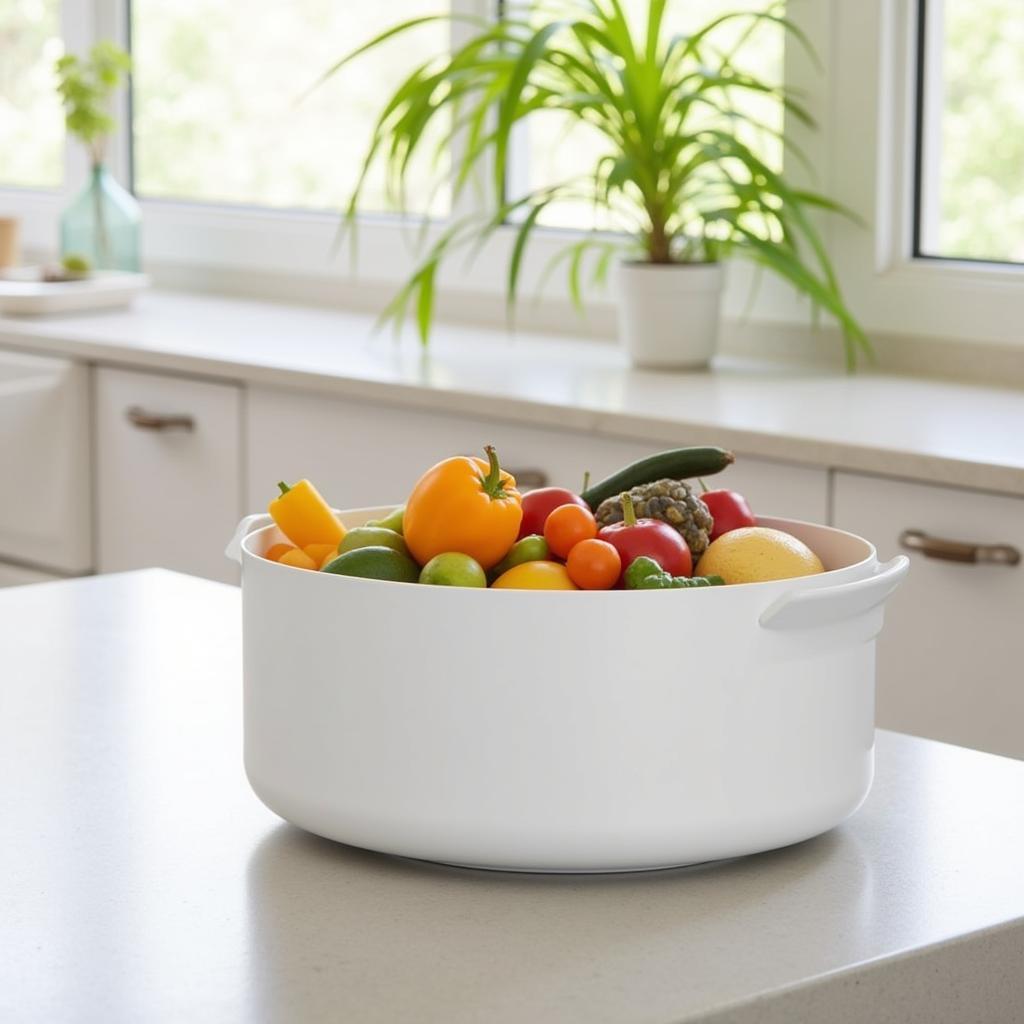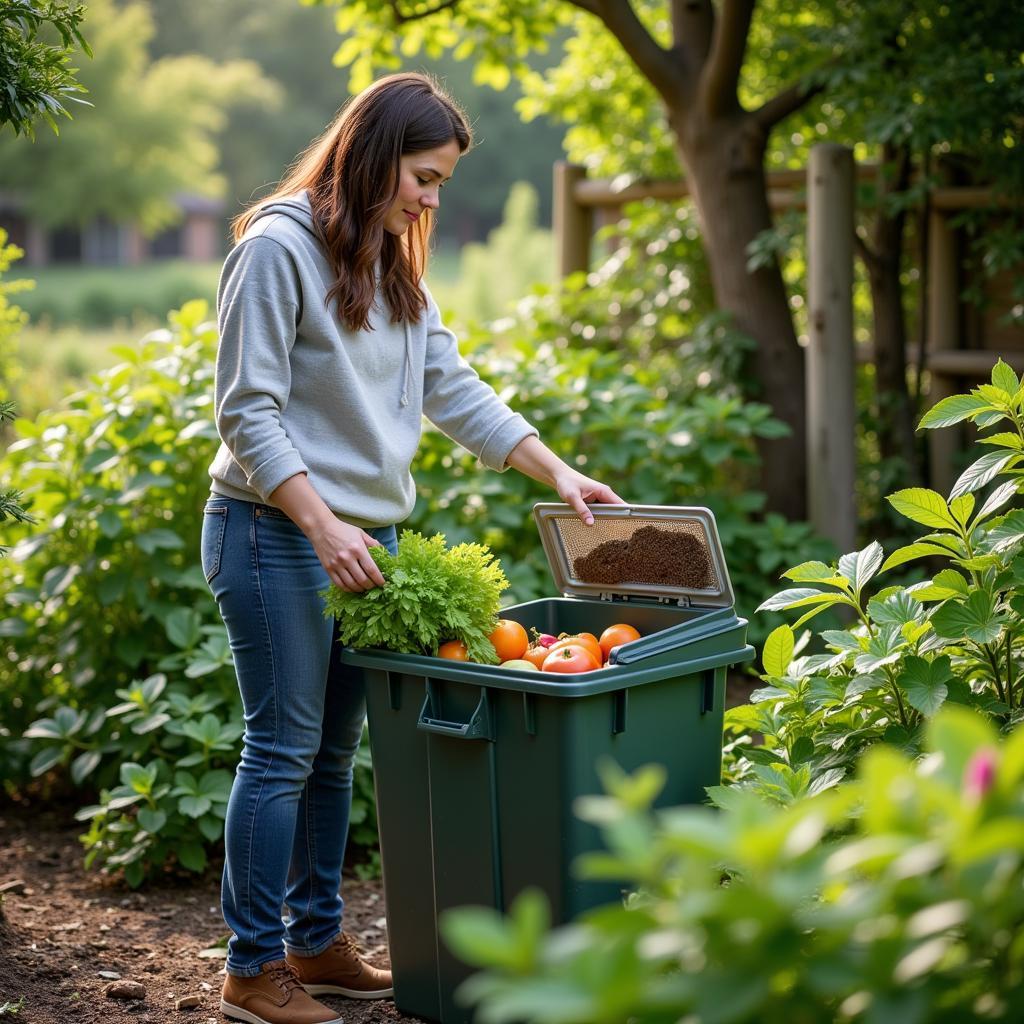Food waste is a growing problem, but did you know that a significant portion of what we throw away could have been eaten? This is where food caddies come in handy. A Food Caddy is a container specifically designed for collecting food scraps and leftovers, making composting easier and more accessible for households.
Why Use a Food Caddy?
Food caddies offer a practical solution to manage food waste at home. Instead of tossing food scraps in the bin where they contribute to landfill, food caddies help you separate and store them for composting. This simple act has numerous benefits for both the environment and your garden.
 A sleek food caddy sitting on a kitchen counter.
A sleek food caddy sitting on a kitchen counter.
Choosing the Right Food Caddy
Selecting the ideal food caddy depends on your household’s needs and composting habits.
Size Matters
Food caddies come in various sizes. Consider the amount of food waste your household generates to determine the appropriate capacity.
Material Considerations
You’ll find food caddies made from different materials, each with pros and cons:
- Plastic: Affordable, lightweight, and easy to clean.
- Metal: Durable, odor-resistant, but can be heavier.
- Ceramic: Stylish and less prone to staining but more fragile.
Ventilation is Key
Opt for a caddy with a lid that allows for proper ventilation. This prevents moisture buildup and reduces unpleasant odors.
Using and Maintaining Your Food Caddy
Using a food caddy is straightforward. Simply:
- Line your caddy: Use compostable bags or newspaper to line the caddy for easy emptying.
- Collect food scraps: Add suitable food scraps like fruits, vegetables, coffee grounds, and eggshells to the caddy.
- Empty regularly: Empty your food caddy into your compost bin or designated collection point frequently, at least twice a week.
- Clean thoroughly: Wash your food caddy regularly with soap and water to prevent odors and bacteria growth.
Food Caddies and Composting: A Perfect Pair
Food caddies play a crucial role in home composting by providing a convenient way to separate and store food waste. The collected scraps can then be added to your compost pile or bin, where they break down into nutrient-rich fertilizer for your garden.
 A woman adding food scraps from her caddy to a compost bin.
A woman adding food scraps from her caddy to a compost bin.
Food Caddies: Small Change, Big Impact
Making the switch to a food caddy is a small change that can have a significant positive impact on the environment. By reducing food waste sent to landfills, we can minimize greenhouse gas emissions and conserve valuable resources. Plus, your garden will thank you for the nutrient-rich compost!
FAQs about Food Caddies
1. What can I put in my food caddy?
You can compost most fruit and vegetable scraps, eggshells, coffee grounds, tea bags, and even small amounts of cooked rice or pasta.
2. How often should I empty my food caddy?
It’s best to empty your caddy every two to three days to prevent odors and fruit flies.
3. Can I put meat or dairy in my food caddy?
No, meat, dairy, and oily foods are not suitable for composting in a typical home setup.
4. How do I clean my food caddy?
Wash your food caddy with hot soapy water regularly. You can also sprinkle baking soda in the bottom to neutralize odors.
5. Where can I buy compostable caddy liners?
Compostable caddy liners are available at most supermarkets and online retailers.
Need More Information?
For any further questions or assistance regarding food caddies, please feel free to reach out to us! Contact us at Phone Number: 02437655121, Email: minacones@gmail.com, or visit us at 3PGH+8R9, ĐT70A, thôn Trung, Bắc Từ Liêm, Hà Nội, Việt Nam. Our customer service team is available 24/7 to help.